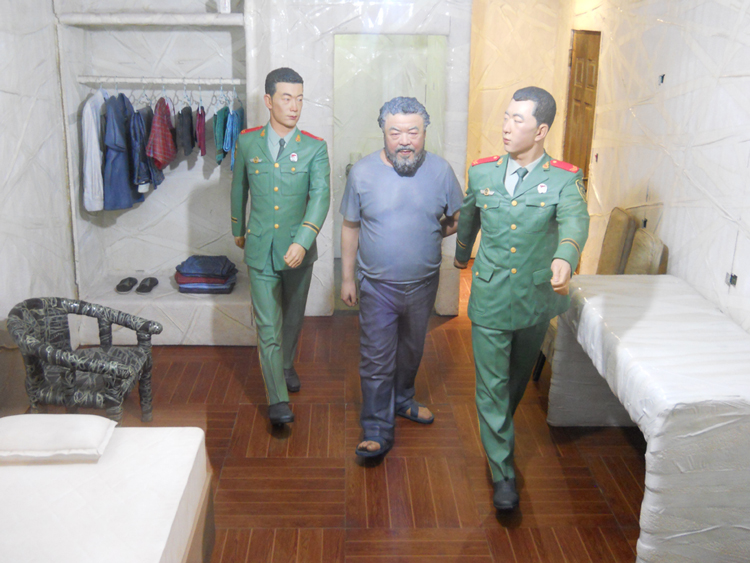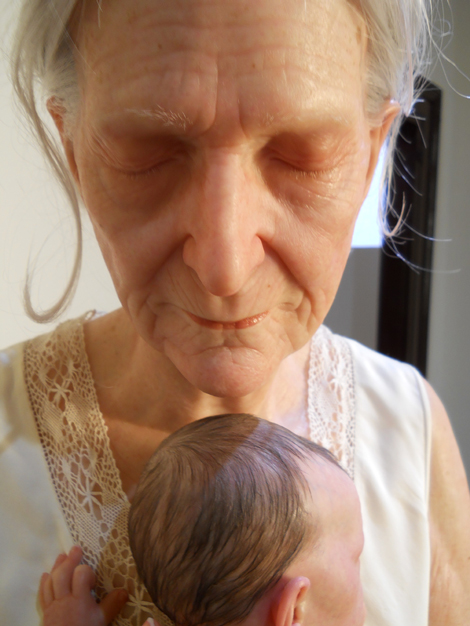A symposium I attended in Italy, “Venice Agendas,” featuring leading curators from institutions such as Tate Britain, Sotheby’s and Serpentine Gallery pondering the future of performance art in museums and galleries, initially brought me to Venice this summer. Throughout the three days of morning discussions and presentations, conversations always returned to the politics and economics of the Biennale, the obscenely disproportionate spending of money on opening parties, promotions and all the bells and whistles that tend to overshadow the actual art on display.
It wasn’t much of a surprise then when I attended the independent performance art festival, Infr’Action, taking place outside the walls of the central Giardini pavilion, and found the minimalist interventions by the performers (none of whom were clearly identified during their actions) all but completely obscured by the intensity of everyday happenings around Venice. The two men rhythmically breaking plates and glasses opposite one another drew as much attention and punch as the average street mime. Whereas, in the deeper labyrinth of the city, I witnessed a Catholic nun break up a fight between two teenage boys—one whose face was dripping with blood. An elderly Italian man spontaneously joins a young American busker in a smooth duet of the Everly Brothers’ “All I Have to Do Is Dream” —to give just two examples of the “performances of everyday life” that make the subtlety and reflection of conceptual works seem stilted, or even forced, by comparison. Add to that the flamboyance and sheer volume of Biennale attendees, the flotilla of private yachts the size of airplane hangers, and a low-hanging fog of schmooze which makes for a difficult arena to contemplate art seriously on any level.
I did though, find some deeply moving and profoundly disturbing visual art outside of the chaotic hubs of the Arsenale and Giardini pavilions. Ai Weiwei’s extraordinary solo installation, “Disposition,” consisted of six steel containers identically replicated to simulate the room that he was held in for 81 days in 2011 by the Chinese government. Each of the dioramas depicts a different scene, including eerily realistic, though diminutive, versions of Weiwei and the officials who had him under constant surveillance during his internment. This surveillance was doubled by the viewers’ voyeurism, peeking through windows at the artist’s doppelganger sleeping, eating, showering and shitting, all under the stoic gazes of his statuary captors.
However, that the installation took place in the Chiesa di Sain’Antonin—a 7th-century church filled with late Renaissance murals of martyred saints—surrounded the exhibition with a grandiosity that threatened to reduce, rather than emphasize, the importance of Weiwei’s ordeal. Yes, his political imprisonment communicates a harshness and psychological violence that is necessary for discussions of censorship and human rights. But put against a backdrop of divine heavyweights, I did find myself confused every time I looked up at the larger than life muscled torsos of Christ and his posse enduring all forms of spiritual expiation and then back down at the figure of Weiwei being watched uncomfortably while he ate his dumplings.
The group exhibition, “Personal Structures,” curated by members of Global Art Affairs, was by far the most coherent collection I saw. New works by Yoko Ono, Vienna Aktionist Hermann Nitsch, and Arnulf Rainer, filled me with optimism by showing that both art and artists can and do remain relevant after decades of practice. Younger artists like Sam Jinks, whose realistic silicon sculptures made me genuinely twitch with their disturbing lifelessness, also demonstrated a level of craft that was equally inspiring.
While the steep amount of decadence and wealth involved in the opening parties and execution of the exhibitions were overwhelming considering the economic state of the world, as a cynical “opportunivore” I was happy to inhale the Prosecco which seemed to flow out of hidden Venetian fonts, and catch a few transparent slices of prosciutto, carved by a gallery assistant who was sweating to turn them out as if he was being circled by sharks which, I suppose, was the case. The only thing worse than rampant indulgence is wasted indulgence, and I never saw more than a few crumbs left at what seemed like the most bountiful of spreads. Additionally, I found that the mixture of alcohol and exotic pork products only helped in leveling the disparities of art-market power and celebrity, the bizarre juxtapositions of location and context of the exhibitions, and, moreover, the Biennale’s exposure of how beautifully complex our needs are as cultural consumers. Perhaps Christ was in those dumplings, after all.




